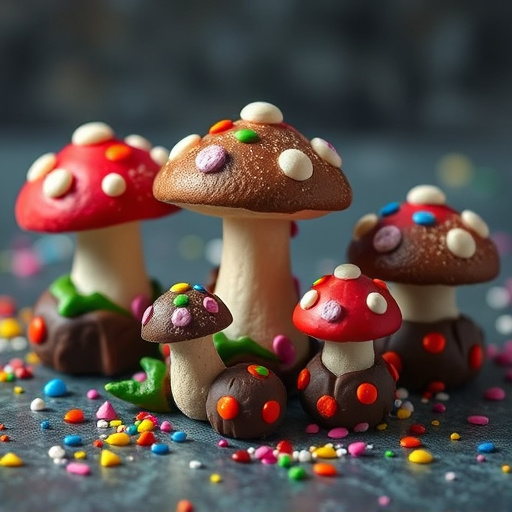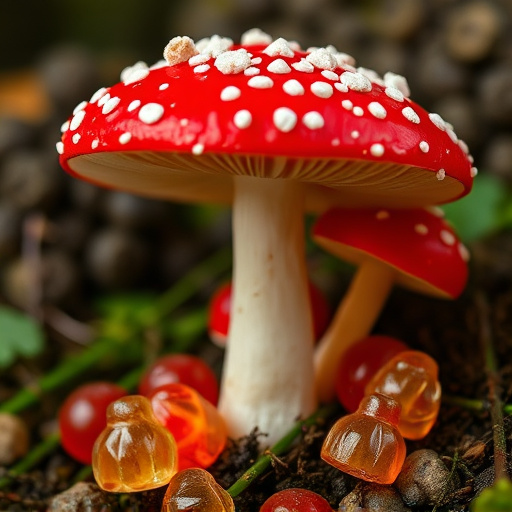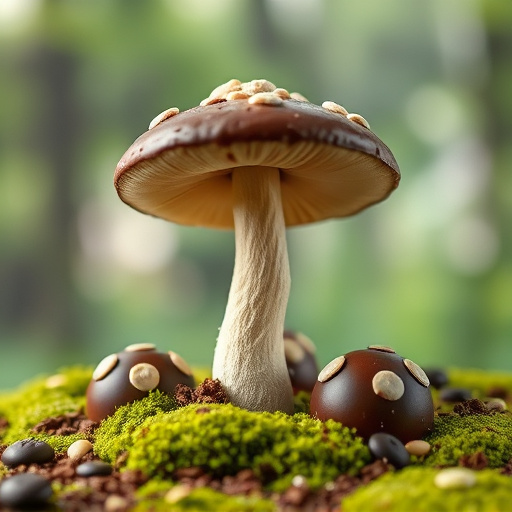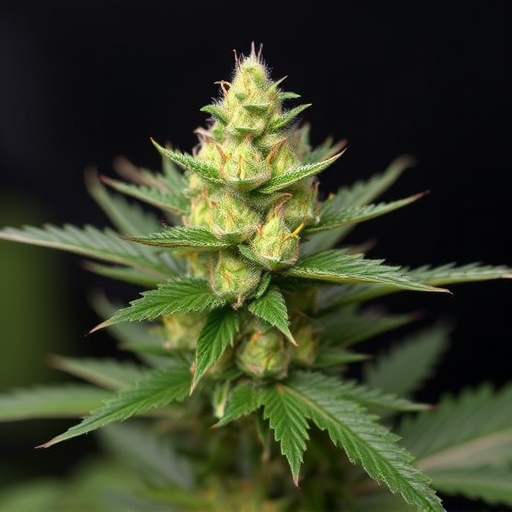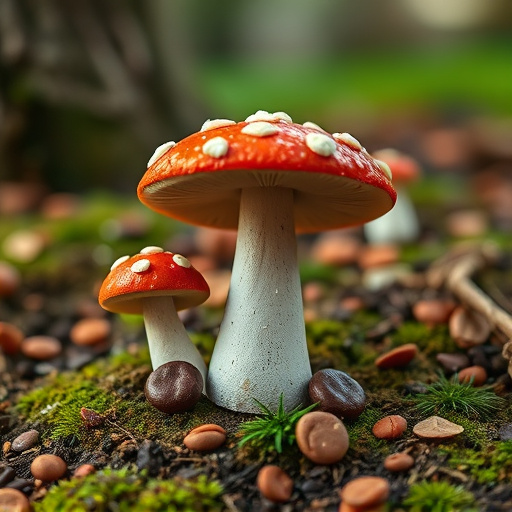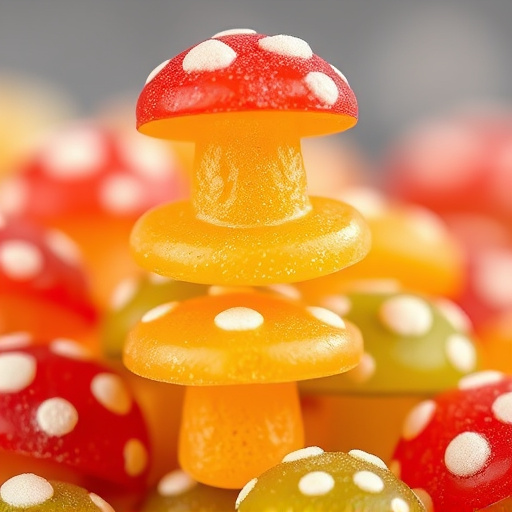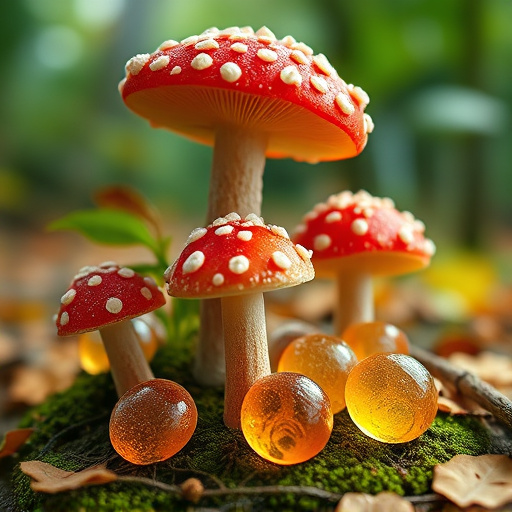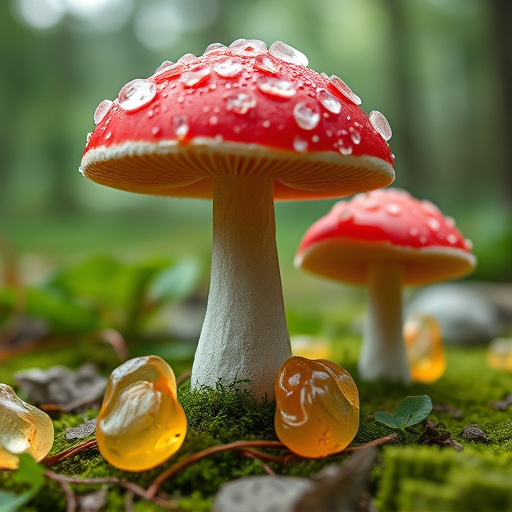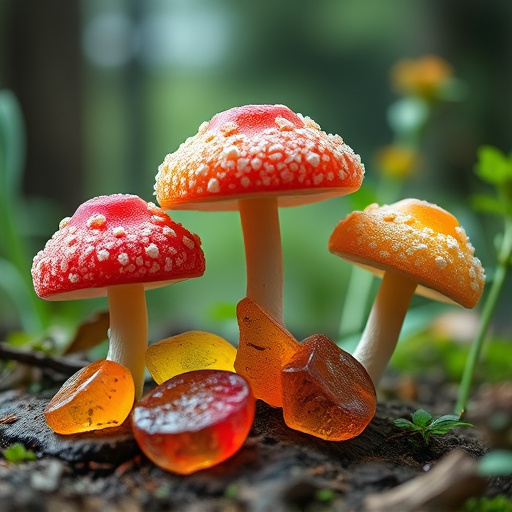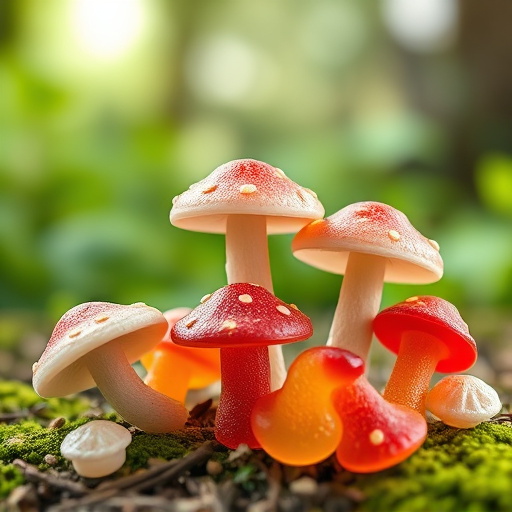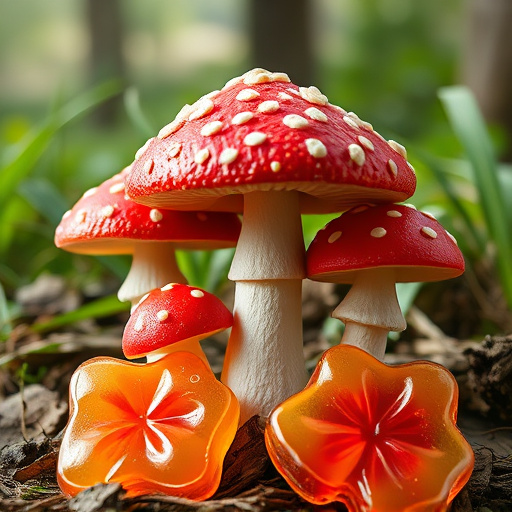"The Science Behind Magic Mushroom Gummies" delves into the neurological science behind psilocybin, the active compound in these edible treats. When ingested, psilocybin converts to psilocin, interacting with serotonin receptors and causing altered perceptions. Studies show promise for treating mental health conditions like depression, anxiety, and PTSD. The article explores modern formulations that transform traditional mushrooms into tasty gummies with measured doses of psilocybin and psilocin. These offer safe, controlled experiences for therapeutic or recreational use, boosting creativity, insights, and emotional connections. However, unsupervised consumption carries risks, and magic mushroom gummies are classified as controlled substances in many places due to their psychedelic effects. Understanding local laws and embracing scientific study are vital steps towards safely exploring their potential.
Discover the enchanting world of Magic Mushroom Gummies – a modern twist on traditional remedies. This innovative form of psychadelic therapy encapsulates the active compounds found in magic mushrooms, offering a controlled and convenient way to explore their therapeutic effects. In this article, we delve into the science behind Magic Mushroom Gummies, examining the active compounds, their potential benefits, safety considerations, and legal status. Unravel the mysteries and learn about this promising magic mushroom alternative.
- What Are Magic Mushroom Gummies?
- The Active Compounds and Their Effects
- Safety, Legality, and Consumption Considerations
What Are Magic Mushroom Gummies?
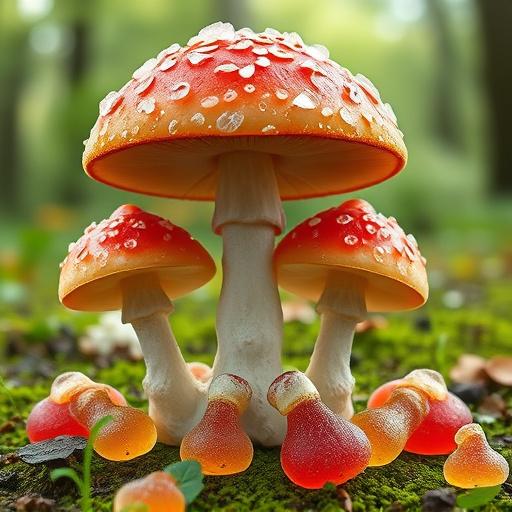
Magic mushroom gummies are edible treats infused with psilocybin, a natural compound found in certain types of mushrooms. These mushrooms have been used for their psychoactive properties for centuries by indigenous cultures around the world. In recent years, there has been growing interest in psilocybin as a therapeutic agent due to its potential benefits in treating mental health conditions such as depression, anxiety, and PTSD.
The science behind magic mushroom gummies revolves around how psilocybin interacts with our brains. Once ingested, psilocybin is converted into psilocin, which binds to serotonin receptors in the brain, leading to altered perceptions and thoughts. This process can induce a range of experiences, from visual distortions to profound spiritual insights. Researchers are exploring the therapeutic potential of these compounds through controlled studies, aiming to unlock their ability to promote psychological well-being and offer new avenues for mental health treatment.
The Active Compounds and Their Effects
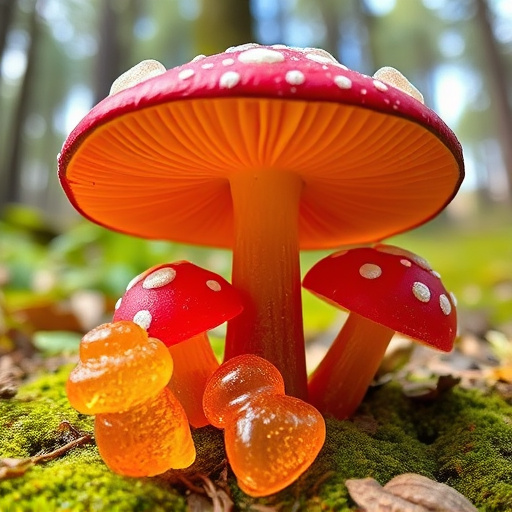
Magic mushroom gummies are a modern twist on traditional psilocybin-containing mushrooms, infused into delicious gummy candies. The active compounds within these gummies are psilocybin and psilocin, naturally occurring psychedelic substances known for their mind-altering effects. When consumed, psilocybin is converted into psilocin in the body, which binds to serotonin receptors in the brain, leading to altered perceptions, heightened senses, and profound emotional experiences.
The science behind magic mushroom gummies lies in the precise measurement and dosing of these compounds, ensuring a controlled and safe experience for users. Unlike their raw counterparts, gummy forms offer an accessible and discrete way to explore psychedelic experiences, making them popular among those seeking therapeutic benefits or unique recreational experiences. Users often report heightened creativity, profound insights, and increased emotional connections during these trips.
Safety, Legality, and Consumption Considerations
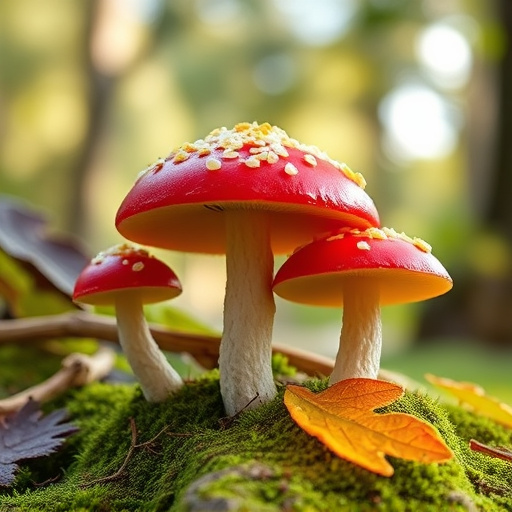
When it comes to safety, magic mushroom gummies, like any psychedelic substance, carry potential risks. The effects can be unpredictable, and individual responses vary greatly. It’s crucial to approach them with caution and a thorough understanding of their impact. Research suggests that under controlled conditions and with proper guidance, certain psychedelics, including mushrooms, may offer therapeutic benefits for mental health issues. However, unsupervised consumption can lead to adverse experiences such as anxiety, paranoia, or even psychotic episodes.
Legally, the status of magic mushroom gummies is complex and varies by jurisdiction. In many places, they are classified as controlled substances due to their psychedelic properties. Possessing, selling, or distributing them without proper authorization is illegal and can result in severe penalties. The legal landscape surrounding psychedelics is evolving, with some regions legalizing or decriminalizing mushrooms for medicinal use. Understanding local laws is essential before considering consumption. The science behind magic mushroom gummies involves complex chemical compounds, primarily psilocybin and psilocin, which are responsible for their mind-altering effects. This growing body of scientific research highlights the potential therapeutic applications while emphasizing the need for further study and regulated access to ensure safety.
Magic mushroom gummies are a modern interpretation of traditional psychedelic compounds, offering a unique and potentially therapeutic experience. As we’ve explored in this article, understanding the science behind these edibles—including the active compounds psilocybin and psilocin, their mind-altering effects, and their safety profiles—is essential for anyone considering consumption. While legal status varies globally, increasing research into the therapeutic applications of magic mushrooms has led to more open discussions about their potential benefits. However, it’s crucial to approach these substances with caution and respect, considering personal mental health and local regulations. The science behind magic mushroom gummies is evolving, and further studies may unlock new insights into their ability to enhance well-being and foster profound experiences.

